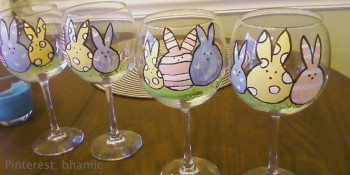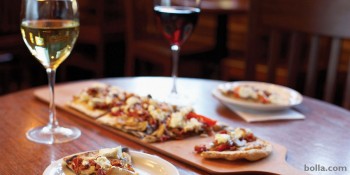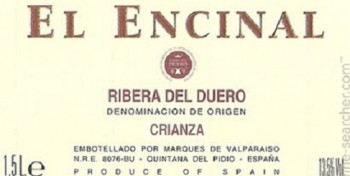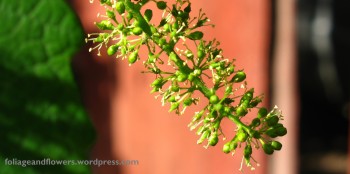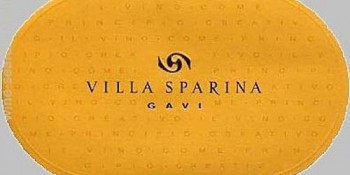If you’re like me and want to enjoy wine to its fullest potential, you should probably come up with a consistent way to taste it. Whether you’re opening a bottle at home, trying a flight of wines with friends, or on a wine excursion in California or New York, repeating the same process over and over is the best way to taste and rate wine as objectively as possible. I recommend following six main steps to enhance your wine-tasting experience:
1. The Bottle
First, check out the bottle. Where is it from? Is it a single varietal or a blend? What year (or vintage)? Answers to these types of questions can tell you quite a bit about what to expect from the wine. Single varietals have common characteristics to anticipate, as do blends from distinct regions. And if you can find information about that wine’s specific vintage in that specific region, you can learn even more about what to expect. Hot, dry growing seasons lend to more concentrated flavors, and usually produce more fruit-forward wines. A cool, wet season will yield less fruitiness and more savory, or green (sometimes called “vegetal”), flavors in red wine.
Alternatively, try a blind tasting. Wrap the bottles in brown paper bags or aluminum foil before you pour, and trust your nose and taste buds to guess the type of wine. “This wine is a light-bodied red, has an earthy flavor, and I taste tart cherries … is it Pinot Noir?”
2. The Pour
After you pour some wine in the glass, take note of a few things. First, look at the color. Certain white wines are clearer, like Sauvignon Blanc, while others are usually straw or golden yellow, like Chardonnay. Red wines can be from light red to the darkest purple. As wines age, they take on slightly brown characteristics. As you swirl the wine in the glass, look at the viscosity, or how thick or thin the wine is. You can also examine the “legs” of the wine — the way that the wine runs down the inside of the glass.
3. The Sniff
Now swirl the wine with the glass on a flat surface, and draw it up to your nose. Don’t be timid — stick your nose right into the glass. Sometimes it is useful to close your eyes, to devote your full focus to just the sense of smell. What do you detect? You’re looking for characteristic aromas: floral, fruit, herbal, savory, etc. Write them down.
4. The Taste
Finally! Sip a small amount of wine and swish it around. You want the wine to coat every surface in your mouth. What do you taste? Sometimes wine needs more air. Swirl your glass and try again, or, with wine in your mouth, draw air in through it. You’ll create a soft slurping sound, but this is a great way to incorporate lots of oxygen into the wine and “open it up.”
You’re looking for five key characteristics:
Flavor (Fruit vs. Savory)
These are the most common descriptors of wines. Does the red wine you’re trying taste like red fruits — raspberries and cherries — or dark fruits, like blackberries? With white wine, you’ll find citrus or tropical fruits, along with apples, peaches, and pears. Sometimes, non-fruit flavors can be detected as well, like green pepper, herbs, flowers, minerality, or leather.
Here are some common characteristics of different wine varietals:
Sweetness
How sweet or dry does the wine taste? If it is sweet, you will detect it on the tip of your tongue. Sweeter wines also tend to have greater viscosity, or a slightly syrupy consistency. Dry wines will — surprise — dry out your mouth.
Acidity
You’ll likely detect acidity as a tingling sensation on your tongue. This is especially common in Riesling and Gewürztraminer but can be present in just about any wine. If you find that you like richer, rounder wines, those are typically low in acidity.
Tannin
Tannin is a compound found in the skins of the grapes that adds bitterness to the wine. As a result, tannins are almost always never found in white wines. In reds, you’ll detect tannins as a cottonmouth, puckering sensation with herbal or tea-like flavor, sometimes described as astringent.
Body
Finally, body describes the weight of the wine. Light-bodied wines are easy drinking, refreshing, and may have a lower alcohol content, while full-bodied wines are heavy, powerful, and are usually higher in alcohol.
What did you taste in the wine you are trying? Again, write it down.
5. The Finish
Now swallow the wine (or spit it out, if you’re driving or tasting a lot of wines). Did the flavors change on the finish? Did the taste last long in your mouth, or did it dissipate quickly? What about tannins: Are they soft and subtle? Overpowering? Well-integrated? Write it all down.
6. The Grade
Now it’s time to rate the wine. Did you like it? How does it compare to other wines of the same varietal, region, or price? How does it stack up against your favorite wines?
There are many different ways to grade a wine: letter grades, 10-point scale, 100-point scale, and more. Famed British wine critic Jancis Robinson uses a 20-point system, while Wine Advocate founder Robert Parker advocates the 100-point system. The easiest way to start is with letter grades. Eventually, you’ll find yourself rating many wines with the same letter grades, and you might start to feel comfortable giving them a numeric score to differentiate among them.
For the serious wino, start keeping a record of your tastings. Cellar Tracker is a great website to record all the wines you buy, along with tasting notes, and the mobile app Cor.kz integrates with Cellar Tracker seamlessly.
Usually, I’m tasting one bottle at a time: the bottle that my wife and I open in the evening or for dinner. But it’s a great experience to try multiple bottles in one sitting and compare them. Try three reds or three whites. (If you’re only trying a few, avoid mixing whites and reds, or if you must, drink the whites first.) Try three different reds and compare the differences. Then the next time, try three reds of the same varietal and compare them. Then, if you really want a challenge, get three bottles of the same wine from the same producer, but from different vintages (a “vertical tasting”).
The possibilities are endless, so start tasting right away!
